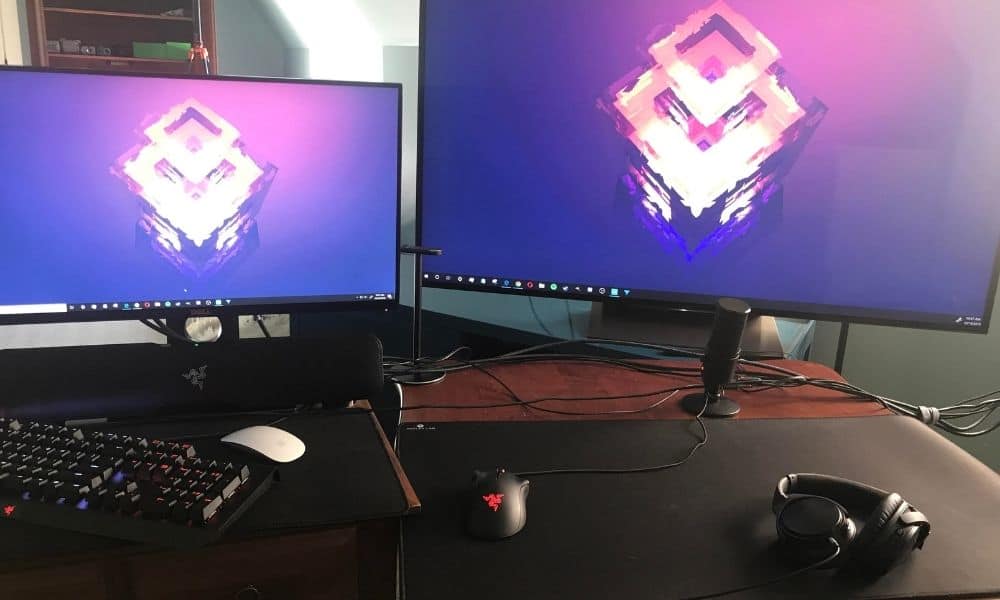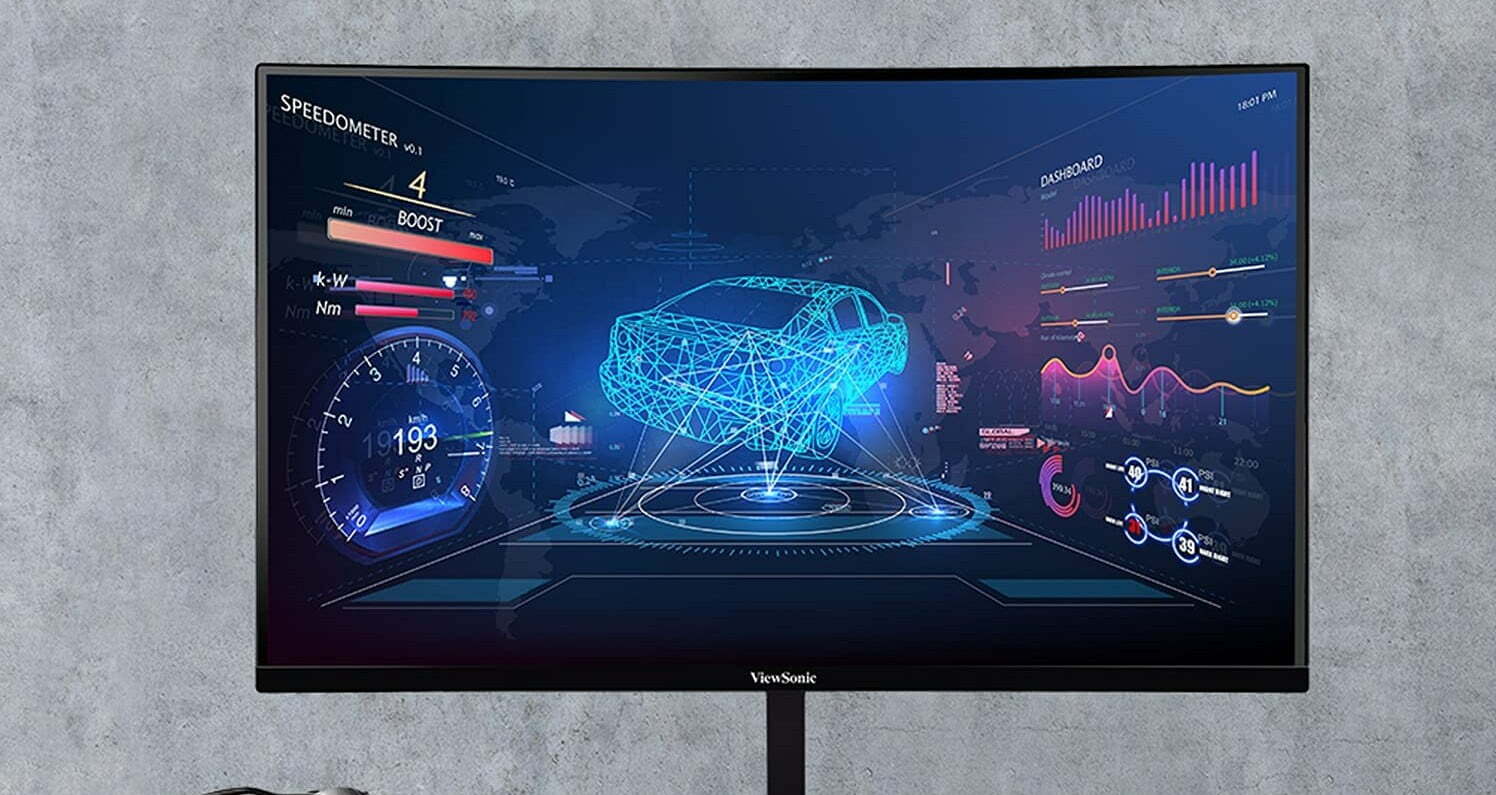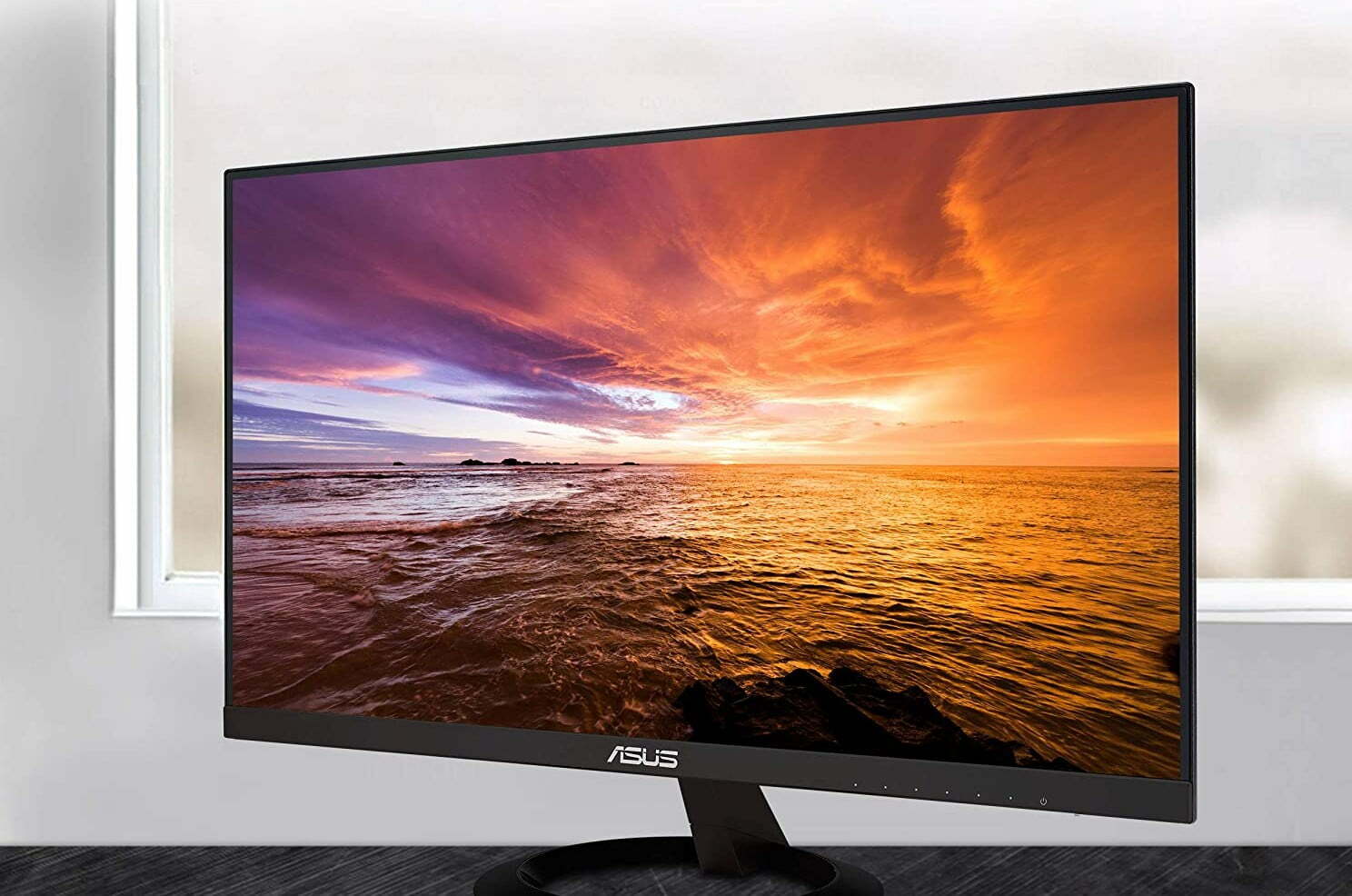Key Takeaways:
- Not all video port types also transmit audio, meaning you may need an additional audio cable depending on the specs of your PC.
- Be mindful of eye strain when using large-format televisions up close over long periods of time.
- Most adapter types are widely available and inexpensive.
For many people, especially those working from home, working with one display can hinder your workflow considerably. However not everybody wants to invest in or has a regular need for a second display– and many of them also have a television. Happily, the method for setting up your modern television as a second (or even primary) leading external monitor display or screen for Windows or Mac computers is fairly easy and often won’t require any extra adapters or cables or for you to purchase a new computer monitor. Here’s how to do it.
How to Use a TV as a Second Monitor
Here are steps on how to use a television as a second monitor.
Time to Complete: 5 minutes
Difficulty: Easy
Tools needed: Hands
Total Steps to Complete: 7
- Identify your computer’s video output port(s)- nearly all PC and Mac desktop computers should have at least two, laptops may vary. In Windows, HDMI, DisplayPort, and DVI are the most common. Use HDMI or DisplayPort if possible, since they transmit both video and audio. On Mac desktops and laptops, HDMI, and Thunderbolt (also called USB-C) connections are most common, though, in older Mac desktops, DVI is more common.
Warning: On Mac desktops and laptops, HDMI, and Thunderbolt (also called USB-C) connections are most common, though, in older Mac desktops, DVI is more common. - Determine whether you’ll need an adapter or not. If your computer/laptop and television have the same port type (HDMI, DVI, etc), you won’t be needing an adapter. Otherwise, you should be able to find the correct adapter at any major online vendor. Be sure if you’re buying a DVI-HDMI adapter to purchase one with the correct male/female connection for the DVI side. Warning: Be sure if you’re buying a DVI-HDMI adapter to purchase one with the correct male/female connection for the DVI side
- Connect your computer via the correct video output port to your television’s video input port. Keep in mind that if you’re using your computer’s DVI port, audio will not transmit into the HDMI port on your television, and you’ll need separate audio cables to do the job.Tip: Keep in mind that if you’re using your computer’s DVI port, audio will not transmit into the HDMI port on your television, and you’ll need separate audio cables to do the job
- Turn on your TV (you don’t need to restart your computer) and using your remote, go to the “input” menu on your TV to make sure it’s set to whichever input your computer is plugged into- these are usually labeled things like “HDMI 1.”
- In Windows 10, click the Windows logo in the bottom left corner, then click on the gear-shape icon at the bottom of the menu, then click “Settings.” From there, click System>Display and check under “Display resolution.” If you’re using the television as your sole screen, simply confirm that your computer is set to the “recommended” resolution and you’re done. If using it as a second screen, scroll down to the “Multiple Displays” section and select “extend these displays” if it’s not already selected.
- In macOS, click on the Apple logo in the top-left of the desktop screen, then click “system preferences” from the drop-down menu. Click “Displays” (the monitor-shaped icon in this window) and be sure “mirror these displays” is unchecked to extend the display onto your television. If the image on your television is warped, too small, or too big, you can select “scaled” and move the “underscan” slider until the image is to your liking.
- And that’s it! Keep in mind that you may need to make some adjustments as far as display positions, resolutions, and scaling since your television is likely to have different resolution specs and limits than your primary monitor, but this is easy to do in both Windows and macOS. Consider taking a look at this next guide if you want to the opposite and also use your monitor as a TV.
Related Posts:
STAT:
Using a large (60” for example) format TV screen as your primary computer display can lead to significantly more eye strain if set directly on your desktop as you would with a normal computer monitor. Check out this guide as well if you’re wondering about using a TV as a monitor in general.
If that’s the case, you’ll want to check into a second monitor that’s covered with a warranty in case there are any issues, like you’ll find in our Pixio FreeSync certified productivity warranty review.
If your PC uses a DVI port for video, you’ll need an additional audio cable for your tv, unlike HDMI, DVI transmits video only.
https://wccftech.com/how-to/how-to-use-your-tv-as-a-second-display-on-windows-10/
Sources:
https://www.wikihow.com/Use-Your-TV-as-a-Second-Monitor-for-Your-Computer
https://www.pcworld.com/article/2924203/use-your-tv-as-a-computer-monitor-everything-you-need-to-know.html
https://www.reviewed.com/televisions/features/how-to-turn-your-ipad-or-tv-into-a-second-monitor
https://appletoolbox.com/how-to-connect-a-tv-or-external-monitor-to-a-macbook/
*https://www.youtube.com/watch?v=2n4hYLfxTIU&ab_channel=I.T.CareerQuestions




































![Best 27 Inch Computer Monitor in [year] 27 Best 27 Inch Computer Monitor in 2026](https://www.gadgetreview.dev/wp-content/uploads/how-to-buy-the-best-computer-monitor.jpg)
![Best BenQ Monitors in [year] 28 Best BenQ Monitors in 2026](https://www.gadgetreview.dev/wp-content/uploads/best-benq-monitor-image.jpg)
![Best ASUS Monitors in [year] 29 Best ASUS Monitors in 2026](https://www.gadgetreview.dev/wp-content/uploads/best-asus-monitor-image.jpg)
![Best Dell Monitors in [year] 30 Best Dell Monitors in 2026](https://www.gadgetreview.dev/wp-content/uploads/best-dell-monitor-image.jpg)
![Best HP Monitors in [year] 31 Best HP Monitors in 2026](https://www.gadgetreview.dev/wp-content/uploads/best-hp-monitor-image.jpg)
![Best Lenovo Monitors in [year] 32 Best Lenovo Monitors in 2026](https://www.gadgetreview.dev/wp-content/uploads/best-lenovo-monitor-image.jpg)
![Best ViewSonic Monitors in [year] 33 Best ViewSonic Monitors in 2026](https://www.gadgetreview.dev/wp-content/uploads/best-viewsonic-monitor-image.jpg)
![Best Gigabyte Monitors in [year] 34 Best Gigabyte Monitors in 2026](https://www.gadgetreview.dev/wp-content/uploads/best-gigabyte-monitor-image.jpg)
![Best Monitors for PS4 Pro Gaming in [year] 35 Best Monitors for PS4 Pro Gaming in 2026](https://www.gadgetreview.dev/wp-content/uploads/best-monitors-for-ps4-pro-image.jpg)
![Best Monitor for Xbox Series X in [year] 36 Best Monitor for Xbox Series X in 2026](https://www.gadgetreview.dev/wp-content/uploads/best-monitor-for-xbox-series-x-image.jpg)
![Best Acer Monitors in [year] 37 Best Acer Monitors in 2026](https://www.gadgetreview.dev/wp-content/uploads/best-acer-monitor-image.jpg)
![Best MSI Monitors in [year] 38 Best MSI Monitors in 2026](https://www.gadgetreview.dev/wp-content/uploads/best-msi-monitor-image.jpg)
![Best SAMSUNG Monitors in [year] 39 Best SAMSUNG Monitors in 2026](https://www.gadgetreview.dev/wp-content/uploads/best-samsung-monitor-image.jpg)
![Best LG Monitors in [year] 40 Best LG Monitors in 2026](https://www.gadgetreview.dev/wp-content/uploads/best-lg-monitor-image.jpg)
![Best AOC Monitors in [year] 41 Best AOC Monitors in 2026](https://www.gadgetreview.dev/wp-content/uploads/best-aoc-monitor-image.jpg)
![Best Philips Monitors in [year] 42 Best Philips Monitors in 2026](https://www.gadgetreview.dev/wp-content/uploads/best-philips-monitors-image.jpg)
![Best Monitors For PUBG in [year] 43 Best Monitors For PUBG in 2026](https://www.gadgetreview.dev/wp-content/uploads/best-monitor-for-pubg-image.jpg)
![Best Stream Decks in [year] 44 Best Stream Decks in 2026](https://www.gadgetreview.dev/wp-content/uploads/best-stream-deck-image.jpg)
![Best Monitors for Streaming in [year] 45 Best Monitors for Streaming in 2026](https://www.gadgetreview.dev/wp-content/uploads/best-monitor-for-streaming-image.jpg)
![Best Monitors For Flight Simulator in [year] 46 Best Monitors For Flight Simulator in 2026](https://www.gadgetreview.dev/wp-content/uploads/best-monitor-for-flight-simulator-image.jpg)




















